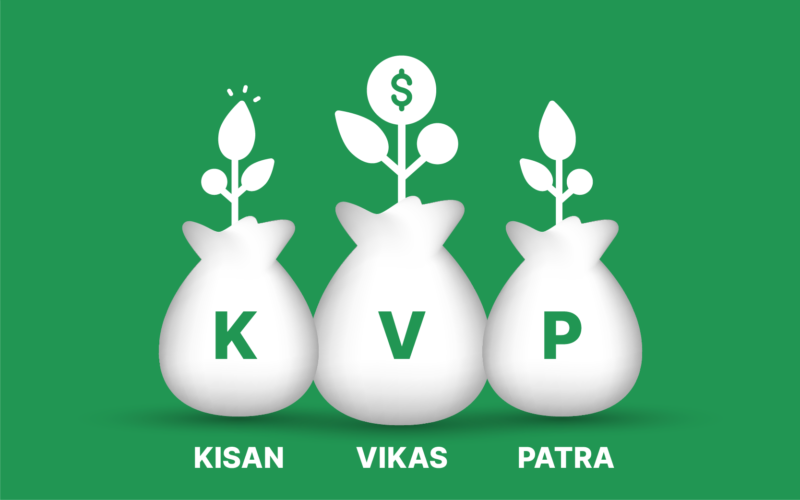
Kisan Vikas Patra (KVP) is a government-backed savings scheme that helps individuals grows their money securely over time.
What is KVP?
Kisan Vikas Patra (KVP) was first introduced by the Government of India in 1988 as a small savings scheme aimed at encouraging long-term financial savings among the general public, especially in rural and semi-urban areas.
An overview of KVP’s journey:
- In 1988, KVP launched by India Post with the goal of promoting savings.
- In 2011, the government discontinued the scheme due to concerns about misuse.
- In 2014, the government reintroduced KVP with improved KYC norms and enhanced security measures.
How Does KVP Work?
You invest a lump sum amount in KVP. This amount doubles after a fixed maturity period. The system compounds the interest annually and pays it at maturity. You receive a certificate or digital proof of your investment.
Key Features of KVP
- Safe and government-guaranteed
- Fixed returns over the maturity period
- Available at all post offices and select banks
- You can transfer it from one person to another.
- Nomination facility available
Income Tax Benefits
KVP does not offer any tax deduction under Section 80C. The interest earned is taxable as per your income tax slab. However, the government does not deduct any TDS (Tax Deducted at Source) at maturity.
Who Can Open a KVP Account?
- Any Indian citizen above 18 years
- Minors through parents or guardians
- The scheme allows joint accounts with up to 3 adults.
Note: NRIs and Hindu Undivided Families (HUFs) cannot invest in KVP.
Where to Open a KVP Account?
You can open a KVP account at:
- Any India Post Office
- Select nationalized and private banks authorized by the government
Deposit Limits
- Minimum deposit: 1,000
- Multiples of 100 thereafter
- No maximum limit
You can invest as much as you want, subject to KYC compliance.
Maturity Period
As of now, the maturity period is 115 months (9 years and 7 months). The invested amount will double at maturity, based on the current interest rate.
Interest Rate
The current interest rate on KVP is 7.5% per annum (as of July–September 2025). This rate is subject to change every quarter.
Compounding Frequency
The system compounds the interest annually, but you receive the full amount only at maturity.
KVP in Online or Passbook Mode
The post office currently issues KVP in physical passbook mode. Some banks may offer an online certificate, but most investors receive a printed certificate or passbook from the post office.
Loss of Certificate
If you lose or damage your KVP certificate, you can apply for a duplicate by submitting a written application with your identity proof and original investment details.
Premature Closure
You can close your KVP before maturity under the following conditions:
- After 2.5 years from the date of investment
- On the death of the account holder
- On court order
- When you need the amount to repay a loan to a government authority.
Loan Facility
You can use your KVP certificate as collateral to avail secured loans from banks or financial institutions. This makes KVP a good option for people looking for both savings and emergency support.
Account Transfer
You can transfer KVP accounts:
- From one post office to another
- From one person to another (in case of legal heirs or court order)
- From bank to post office and vice versa
Nomination Facility
You can nominate one person at the time of opening or anytime later. If the investor passes away, the nominee will receive the proceeds.
Can NRIs and HUFs Invest in KVP?
No. KVP is only for resident individuals. Non-Resident Indians (NRIs) and Hindu Undivided Families (HUFs) are not eligible to invest in this scheme.
